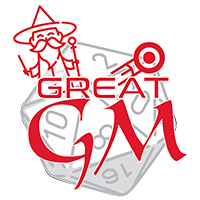Forest Elves
The second most common type of Elf known to humans. Forest Elves are closely related to River Elves, both culturally and genetically. The two share a nation, though Forest Elves remain fairly independent, governing themselves and producing the non-aquatic food and goods of the nation. They live in great arboreal farming communes, and mostly keep to themselves.
Basic Information
Anatomy
They tend to have tanned and freckled skin. Their defining feature is their beautiful green eyes, ranging from emerald to peridot. Their hair colors range from brown to muted shades of green. Their Elven pointed ears are more horizontal than upturned, yet still hug close to their head.
Genetics and Reproduction
Like all Elves, Forest Elves are hermaphroditic, and are able to both sire and give birth. Forest Elves have brood sizes of 3-5. Their pregnancy length is less than half a year long.
All Forest Elves are born without sexual characteristics. There are two distinct reproductive roles for River Elves: Helpers and Consorts.
All Forest Elves are born without sexual characteristics. There are two distinct reproductive roles for River Elves: Helpers and Consorts.
- Consorts are the members of the breeding group. They are the leaders of the commune, and the only ones who reproduce, breeding with each other. Generally, there are two to five consorts for an average consorts, though there may be more if the commune is especially large. Their duties are to lead and direct the actions of the group, and reproducing and nursing young. While they are able to mate year round, they choose not to mate in certain years as a form of population control. Births generally taper off in winter. Once they are too old to breed, they will be replaced by new, foreign consorts. Some communes may only accept possible consorts from carefully selected foreign communes to avoid inbreeding, but most select one native resident to become a consort, and select the rest from foreign communes. Though it's not unheard of for a commune's consorts to try experimenting with another commune's consorts, but it holds a chance of inbreeding, and for that reason, is discouraged.
- Helpers are the rest of the group, and never develop sexual characteristics and fertility. However, it is possible for them to mature without permission of the commune, as the process is triggered by the absence of specific hormones and outside pheromones. Their duties are to maintain the fields, attend to consorts, teach and raise young, and create clothing.
Ecology and Habitats
They can be found in lush verdant areas, and live in huge farming communes with their extended families.
Additional Information
Perception and Sensory Capabilities
Like all elves, they have a special aptitude for mastering magic. They are especially renowned for utilizing magic in agriculture.
Civilization and Culture
Naming Traditions
For Forest Elves, their naming conventions are as the following:
(Personal Name) (Commune Name) + “en”
Helpers almost never leave their natal commune, and when Consorts are accepted into a new commune, they change their commune name accordingly, appending the suffix “en” to indicate their foreign origins. Similar to River Elves, their names use soft sounds. Names that end in “-o” are common especially among Helpers. Names that end “-a” are reserved for consorts.
(Personal Name) (Commune Name) + “en”
Helpers almost never leave their natal commune, and when Consorts are accepted into a new commune, they change their commune name accordingly, appending the suffix “en” to indicate their foreign origins. Similar to River Elves, their names use soft sounds. Names that end in “-o” are common especially among Helpers. Names that end “-a” are reserved for consorts.
Beauty Ideals
Consorts are expected to be beautiful and to maintain their appearances heavily, whereas Helpers are meant to remain demure and humble. For that reason, Consorts tend to wear a lot of ornaments and fancy clothing, while Helpers wear plainer garments.
Major Language Groups and Dialects
They share a language origin with River Elves, and some consider their languages to be actually dialects of one another. There are some accents associated with certain regions and communes.
Common Dress Code
Ear piercings are a significant cultural practice to them. The use of flowers as adornment and decoration is very widespread.
Culture and Cultural Heritage
Ukranian inspired culture.
Common Customs, Traditions and Rituals
- They have a large amount of summer and autumn harvest festivals, during which a few will travel to a location and meet up with other communes.
- Each commune has a family shrine where pictures and records of previous family members are kept.
- Painting the houses and buildings is seen as an essential process of completing a building.
Genetic Ancestor(s)
Lifespan
~200 years
Average Height
4-6 ft
Geographic Distribution
Remove these ads. Join the Worldbuilders Guild









Comments